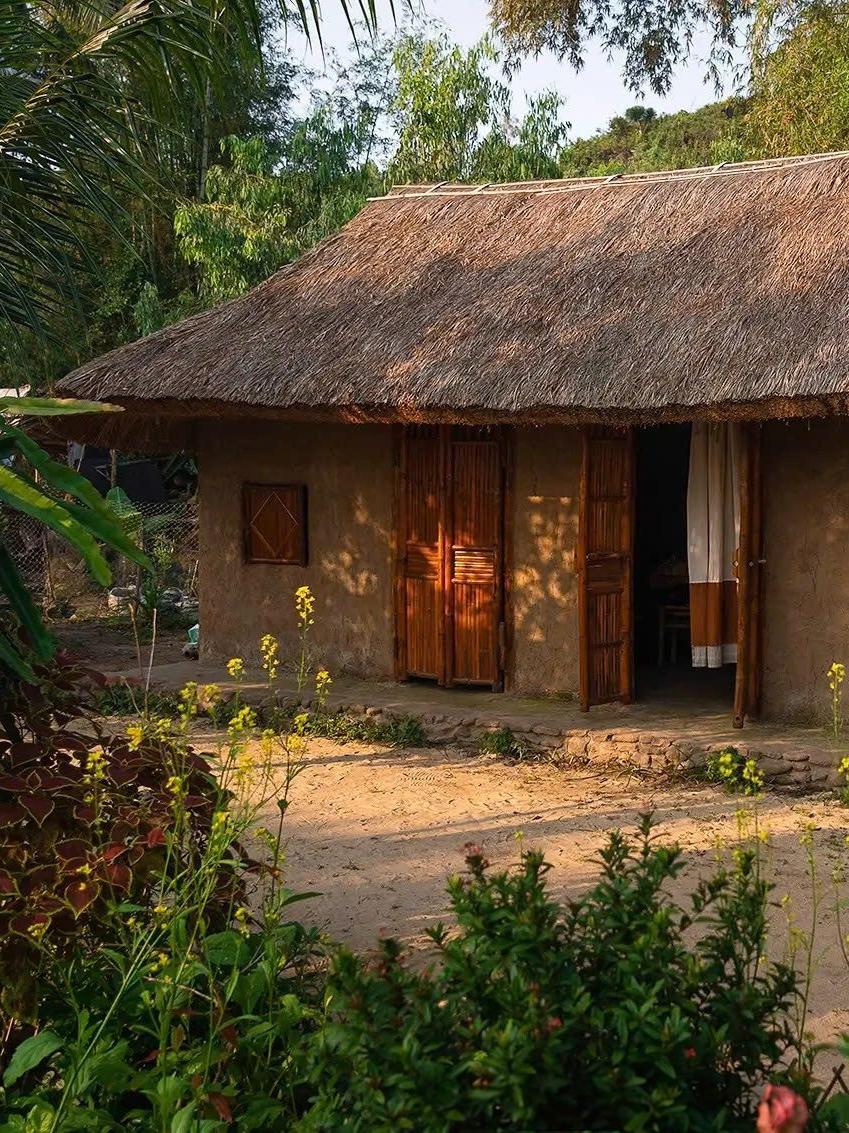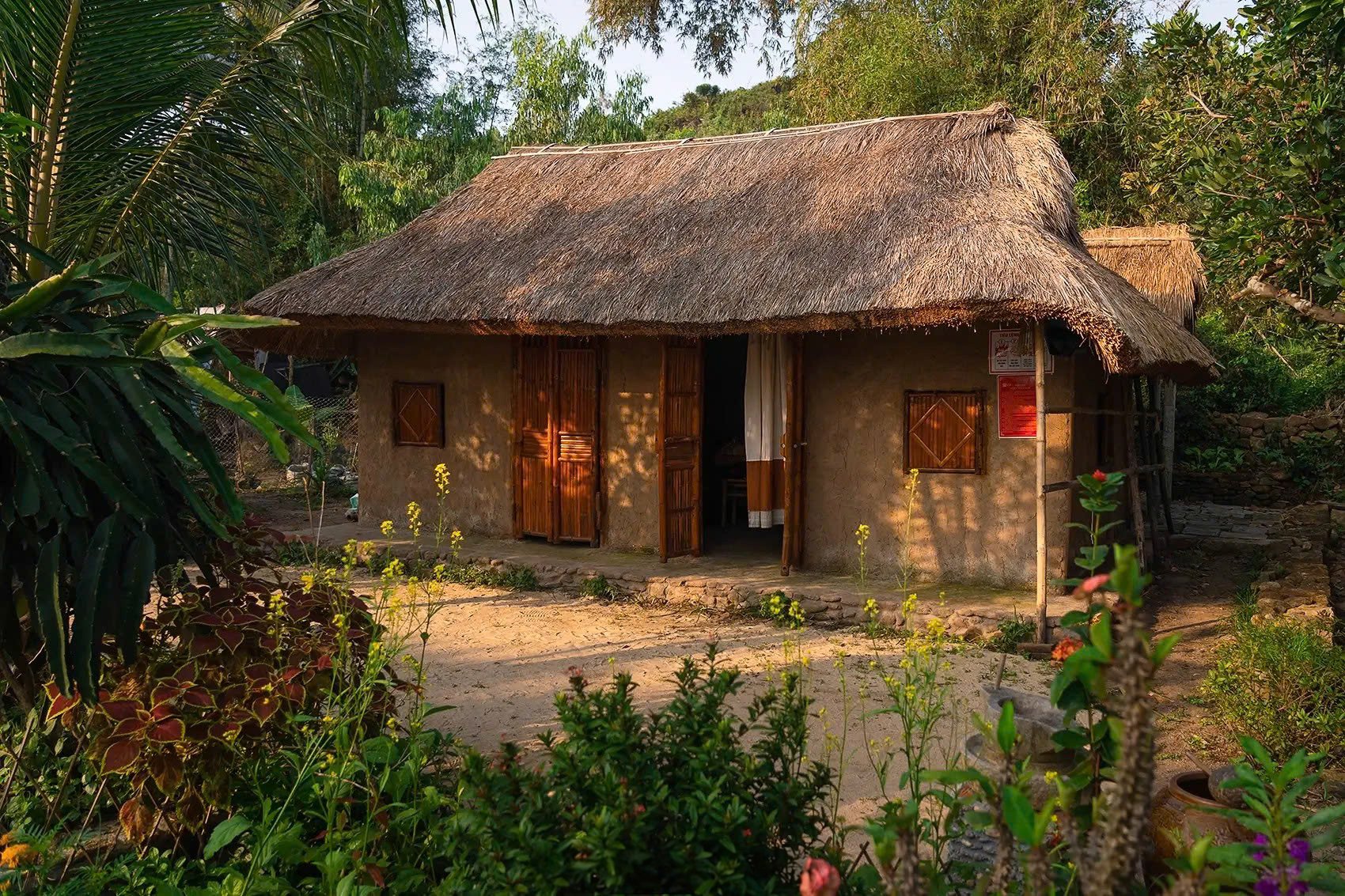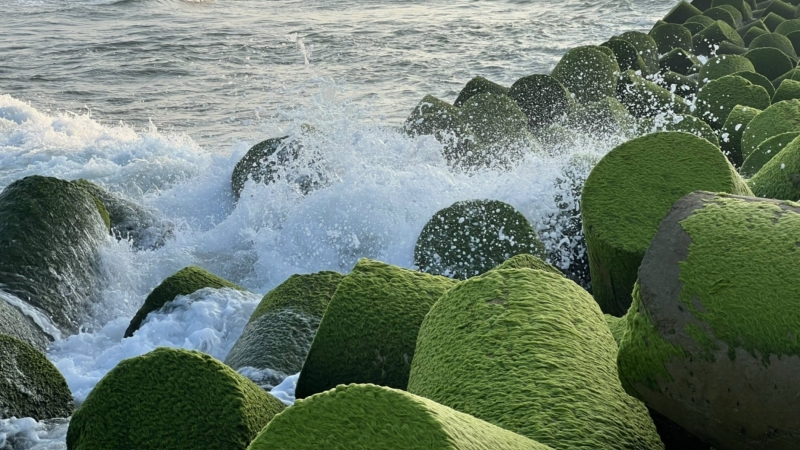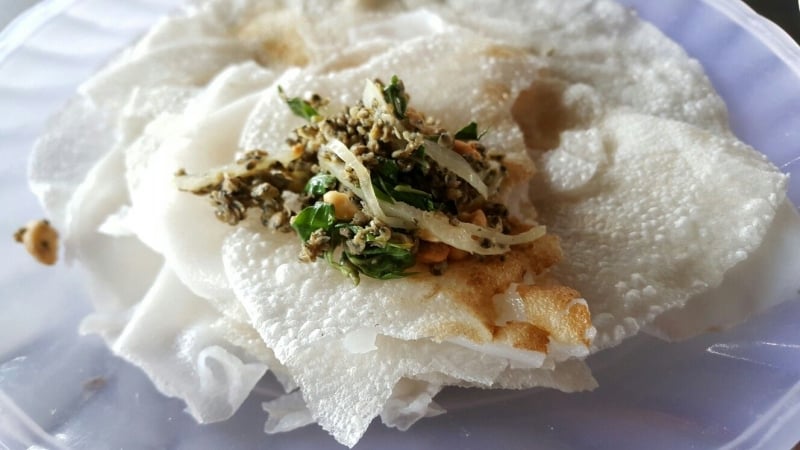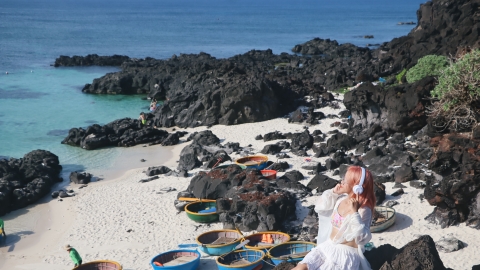About a village of stone and sea
Go Co village is nestled in the coastal valley of Sa Huynh, an estuary in the south of Quang Ngai province, where the Saltwater Lagoon flows into the East Sea. This is the core area of Sa Huynh culture, once home to the Cham people from the 7th to 15th centuries and is now a bright spot on the Vietnamese community tourism map. The road to the village is only a path through the rocky hills, at the end of the road is the beach, the livelihood of the whole village.
Go Co has only 83 households living among the 105-hectare coastal rocky hills with terraced fields overlooking the golden sand beach, ancient stone wells, and village roads paved with metamorphic rocks dating back hundreds of millions of years. These relics are not in museums but are located right in the middle of daily life, where people still carry water, untangle nets, and go to the market every morning.

The path leads to the beach at the end of the village
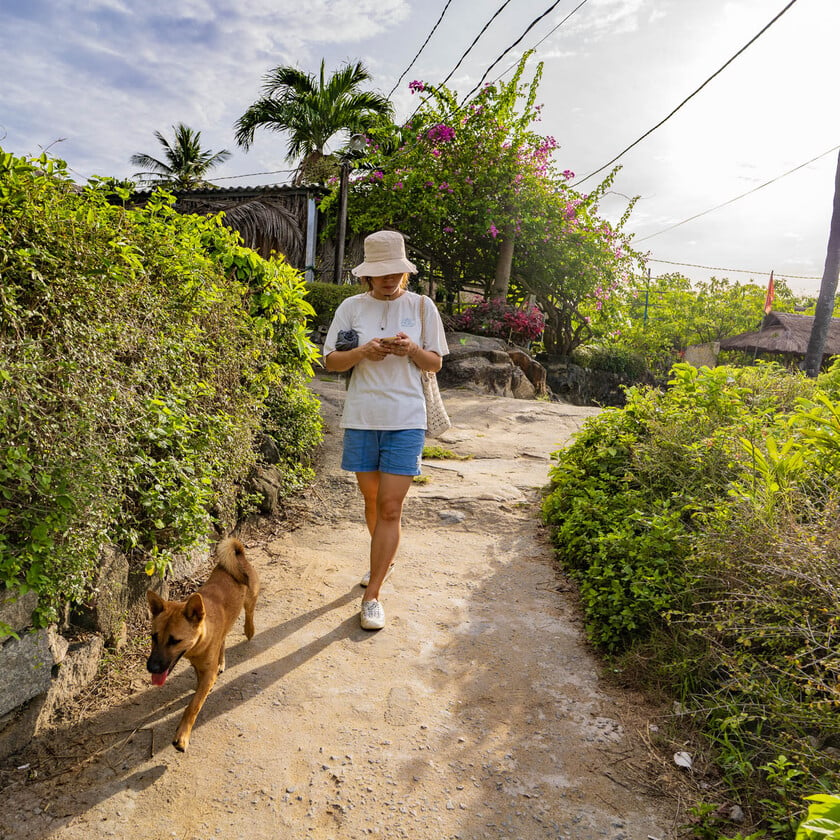
The stone-paved roads are millions of years old.
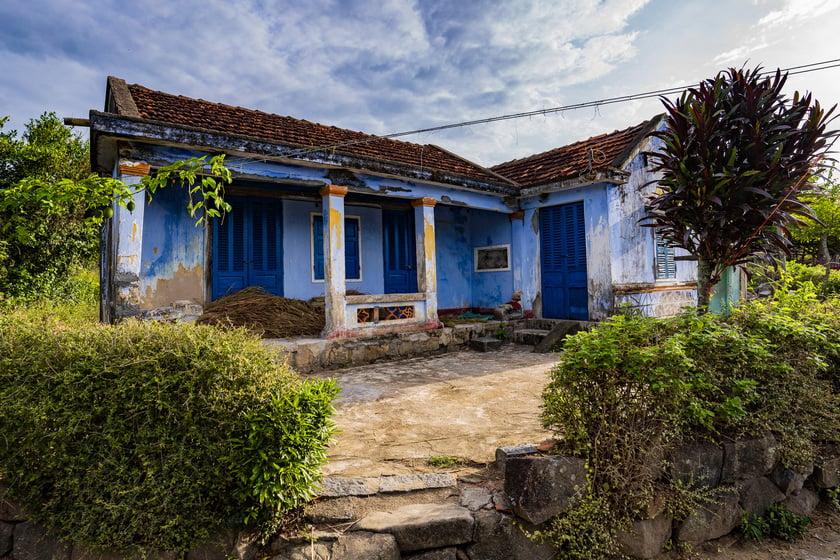
Ancient simple scenery in Go Co village
During three days (June 14-16) at Dua Rung homestay of Ms. Di and Mr. Binh, Nhat lived like a villager. He lived in a real thatched house with no air conditioning, no TV, sleeping on a bamboo bed and a rush mat. He woke up early in the morning, went swimming, enjoyed the breeze, and in the afternoon went out to pick up Mr. Binh at the beach. Some days, he went to the beach from 6pm to 10pm, and when he didn't catch enough fish, he went out again at 3am. Every rhythm of life in the house revolved around the water.
“The house has thatched walls and earthen walls, but it is cooler and more airy than I thought,” he said. “At noon, I fell asleep on a hammock in the front yard, the sea breeze blowing in, cool and refreshing without the need for a fan.” There is no entertainment equipment in the house, so his family spends time outside chatting with the locals, walking around, and admiring every small detail of the ancient village marked by time.

The thatched-roof room where Mr. Nhat stays at Dua Rung homestay

Staying here, Mr. Nhat often goes out for walks to observe the village as well as the people's lives.
Village stories, people stories
Ms. Di and Mr. Binh, the owners of Dua Rung homestay, not only provided accommodation but also gave Nhat a vivid memory of this village. During his stay, he often heard them tell stories: “The story of how things were difficult in the past, and how tourism is better now. Stories of shrimp and fish, stories of the village, stories of eight children working far away…, you can listen all day without getting bored.”
Three days in Go Co seemed to help him relive the summers in the countryside with his grandparents. Meals included tubers and fish, afternoon naps in a thatched house, waking up to the sound of the sea breeze. His family walked through the winding dirt roads in the village, followed fishermen to the sea to fish, dived in the clear water, and sat with their aunts and uncles at night to remove fishing nets. Meals were cooked from fish just pulled in, vegetables picked from the garden, and sea urchins mixed with eggs in a rustic style. “The villagers here cling to the sea, live simply, but have a strange resilience,” he said.

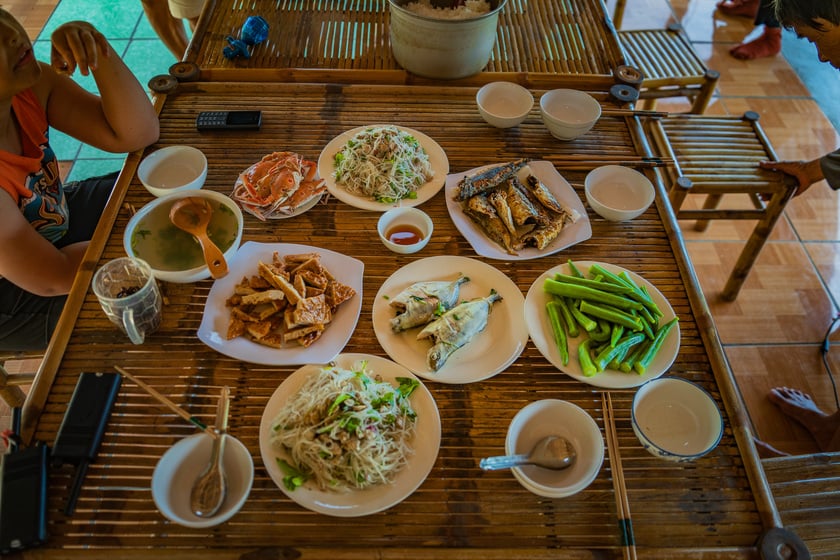
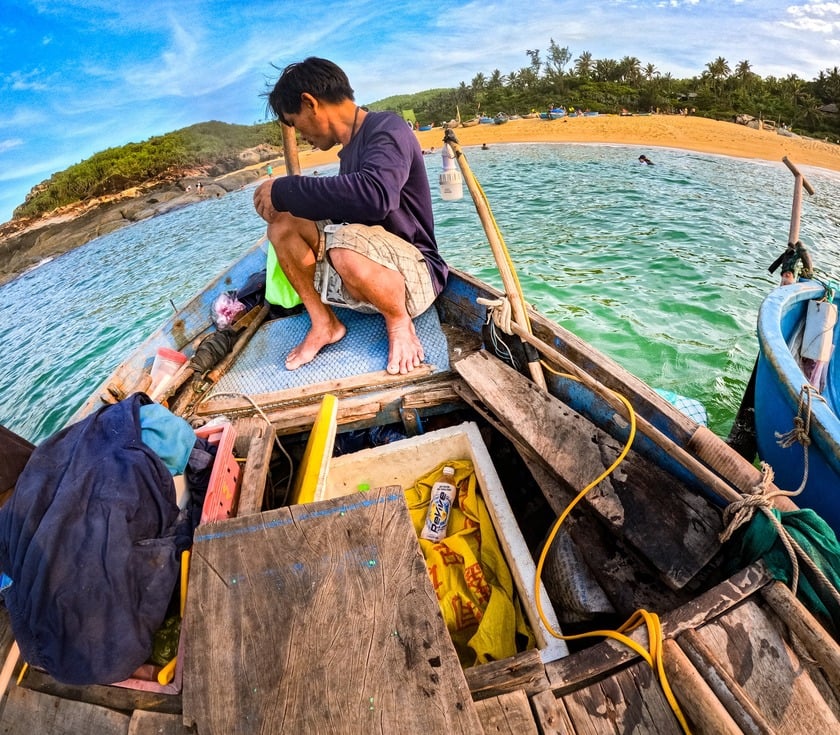
Go fishing with the fishermen
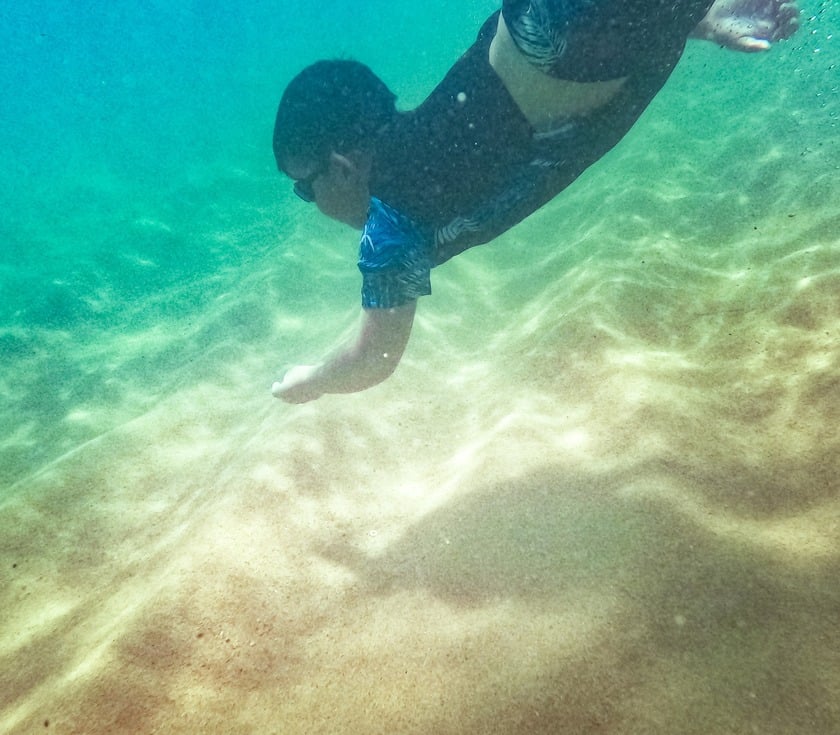
Swimming and diving in the clear blue water
It is also thanks to that simplicity that his family is closer to the local people. He helps Ms. Di dust, sweep the house, touch the cool earthen walls of the thatched roof, carry her plastic basket to the sea to get fish that Uncle Dinh caught to sell at the market, take a nap in a hammock in a bamboo hut to enjoy the cool sea breeze. The daily life of the villagers, but for Mr. Nhat, this is a way to slow down to listen to nature, people and feel more clearly the value of each moment.

Enjoy the sea breeze on a hammock in a bamboo hut
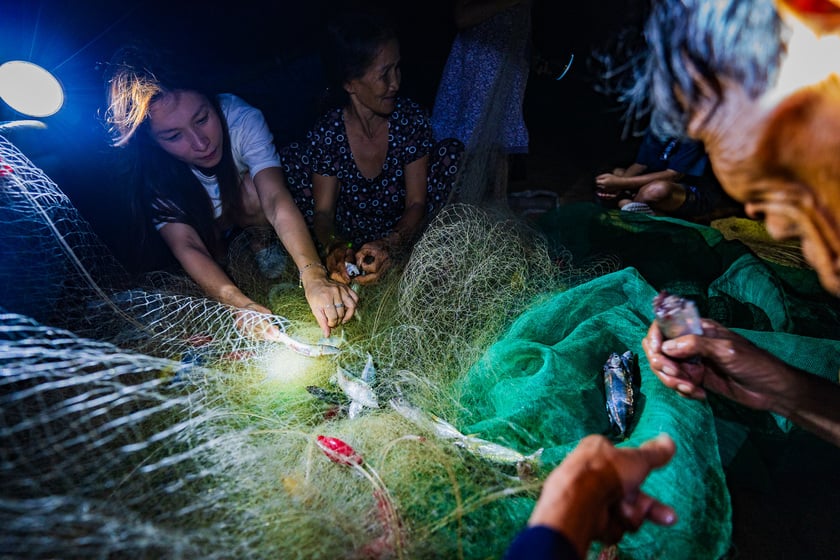
Mr. Nhat unloads fishing nets early in the morning with the homestay owners

Harvesting the day's catch with fishermen
Heritage awakened and preserved by villagers
The reason why Go Co can preserve its pristine space lies not only in its isolated location but also in the community spirit of the villagers. Sa Huynh is a strip of golden sand stretching from Pho Khanh commune to Pho Thach commune. This is the first place where archaeological relics of Sa Huynh culture were found. Not only is it the earliest among the relics of the same type, Sa Huynh also preserves the pristine living space of ancient people. The diverse ecological environment, human geology, and unique geomorphology make this place an ideal land for settlement and the formation of a long-standing culture.
With a dense density of Sa Huynh and Champa cultural relics, ancient stone structures and traditional activities still intact, Go Co people have gradually learned how to take advantage of history to do community tourism since 2018. By 2020, the village was recognized as a 3-star tourist village according to OCOP standards. They divided into groups to provide services, together preserve the landscape, protect the beach, and guide tourists to live like a local. Now, the village is often called "Village Heritage Park".
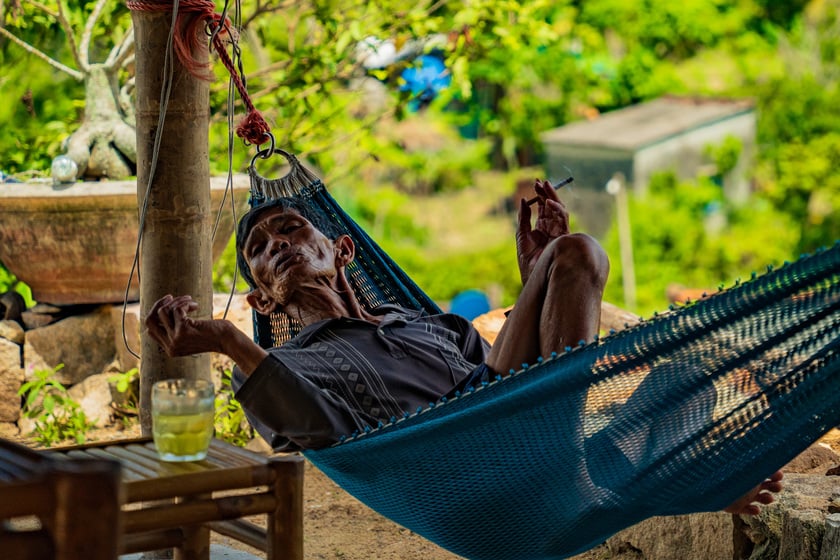
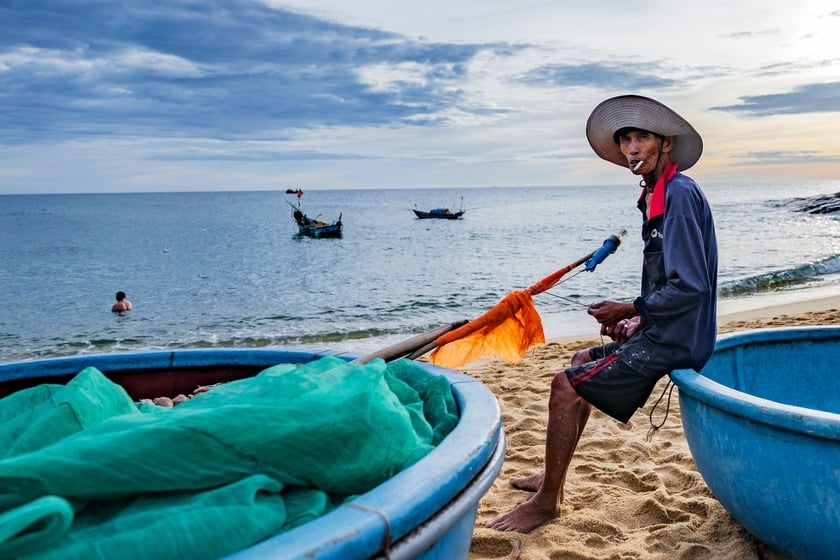
Go Co people do tourism in a rustic, genuine way, helping tourists feel the soul of the countryside.
In the context of modernization spreading to every village, Go Co still steadfastly holds on to itself, not letting modernization sweep everything away. The “fossils” of Sa Huynh and Champa culture still live in every stone, field, and well. Go Co people do not do tourism to change the village but to help others understand the village better. Each thatched house is a slice of memory, each stone well is a testament to Champa life, and each story told by uncles and aunts is a living material.

Mr. Nhat's family took a souvenir photo with Ms. Di and Mr. Binh - the homestay owner
“Here, the more rustic and authentic the type of tourism, the more sought after it is,” Nhat said. When leaving Go Co, he looked back at the rocky hill reflected in the early morning sunlight. The path leading to the sea was still there. The small village between the mountains and the sea was not bright or comfortable, but in his heart, it was a region of awakened memories.





